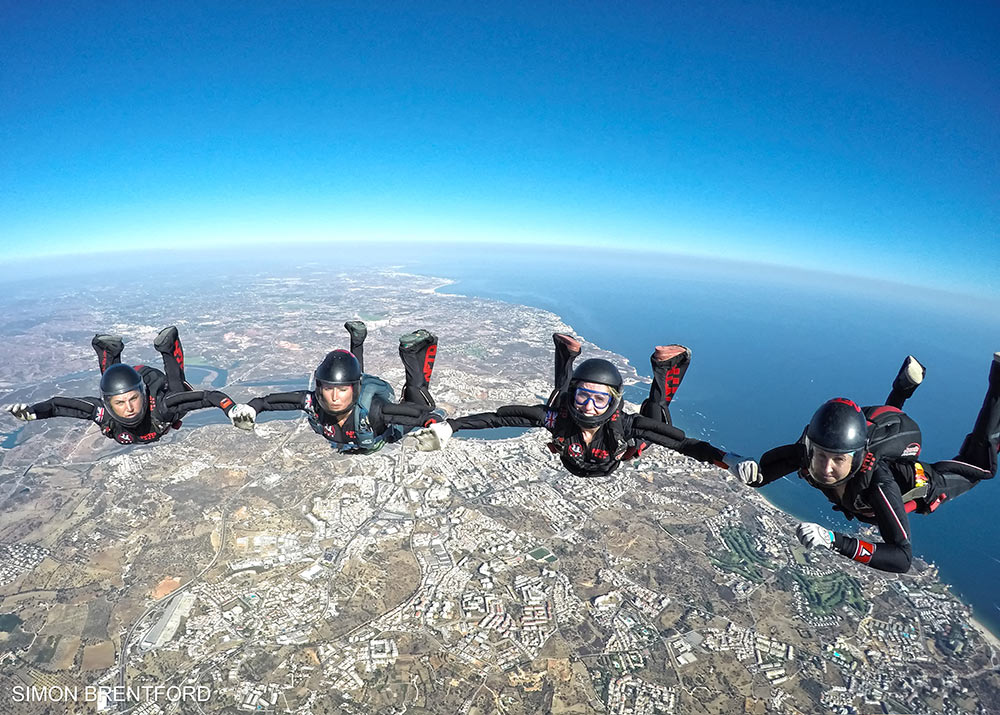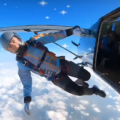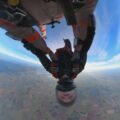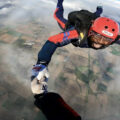- Swallow Group Dropzones:
- Skydive Hibaldstow
- Skydive Spain
- Skydive Algarve
Diving the Dirt Dive
Monday, April 20, 2020
Hi everybody, as you all know, Skydive Hibaldstow is closed at the moment due to the terrible COVID-19 virus which blights us all. We may not be running jump operations at the moment, but that doesn’t mean to say we can’t share a few tips here and there!
Therefore, this is the first of a series of blog posts by Simon Brentford about training, psychology, safety, competition, equipment and anything else we can think of.
Mind Games in the Airplane
Have you ever planned a skydive with your friends, your team or a load organiser. On the ground, the dirt dive is perfect. Everyone knows their place, it builds quickly and the plan is crystal clear. Yet when you climb aboard the airplane on the ride to altitude, you feel distracted, you question who is going where, what their rig colours are and who is keying what. If we are honest, we’ve all experienced this!
The simple truth is that making your dirt dive and ride to altitude requires you to take it seriously and to really absorb the plan. Putting an extra 2 or 3 minutes of prep on the ground can be the easy solution to this. We all know what rushing a dirt dive achieves.
Stating the Obvious
Of course, this makes total sense, but you’re on a dropzone with your besties and you want to have fun as well. We get that, so smile, ask the questions and remember the following four simple tips for dirt diving success:
- How am I getting to the formation, or, if it’s a gripped launch, how am I presenting to the slipstream.
- How many points are there.
- Who is keying each point.
- Where do I need to be without reaching for grips and where do my legs need to be to help someone else.
The Plan in the Aircraft
Whether you are in a Cessna Grand Caravan, a Dornier, or something else, the cabins are usually cramped with legs, containers and helmets everywhere! That makes it hard to concentrate.
So here’s a good a plan for translating from dirt dive to successful skydive. It starts with the last dirt-dive with kit on:
- Check the colours of the 1st person you’re docking on, then the person to your left and to your right. If it’s a larger formation (more than 10), look for the shape of the formation to help guide you in case you get lost. Keep it simple – it could be red container ahead, pink helmet left, navy blue jumpsuit right.
- As you board the airplane, make sure that both you and the person you are following out are seated in the correct place. Having to swap around inside the cabin helps to build confusion both in you and those around you.
- As the airplane takes off, close your eyes and visualise who is giving the key to launch. It could be you! it could be someone you can’t even see. Say the planned shake in your head “shake, shake, shake, up, down out”. That allows you to fall into line, become synchronised and ready to go.
- At 8,000ft, run through the dive plan a few times at normal speed.
- At 10,000ft, run through the dive plan doing a single page at half speed.
- Once everyone has done their hands in, think of the first 5 seconds including the launch in super slow motion. Visualise what you are presenting, where you are going to be and what you can expect to see.
Credit: Joe Mann
Competition Dirt Diving
Have you ever taken part in a competition and noticed the difference in the attitudes and expressions of seasoned competitors? They’re usually different – there’s a real sense of meaning business, a desire to care about doing a good job. In essence, it’s all about focus.
If you’ve paid attention to your dirt dive, visualised in the airplane, then the probability of a successful skydive will have increased significantly. It’s important to note, that you don’t need to feel stressed or worked up, it’s a case of being able to relax because you really know the plan.
Another key to having a successful competition is to treat each round separately. Accept that you are going to have a duff or two and that is ok. When you dirt dive, you want to look at that jump for what it is, compartmentalise it, without sub-consciously adding any performance bias from the previous round.
But I want to have fun!
If all the information in the article sounds too regimented and unexciting, it doesn’t have to be. Think of your next skydive with two outcomes – the first, you didn’t really pay attention and you bust a load of points, went low or forgot stuff. The second, you did pay attention, you had a super smooth approach and dock, you’ve racked up a bucketload of points and you saw everything.
That sense of achievement is very fulfilling and it’s why you learn faster and get invited onto cooler jumps / teams. It’s important to note, that this isn’t an exercise on becoming a skygod here, it is instead a pursuit of satisfaction having personally given it 100%.
Play Time
Here’s a great tip for team training. If you are a 4-way team, getting out at 10,500 on each jump, go to altitude on the last load and then have someone set your audible altimeter higher. The beeps will go off, then you can play together without stress such as a heads in spin, or line-off to face the camera person. If you’re a freeflyer or 8way team going from the top, how about doing a fast 35 seconds of work, then stopping working time a little higher on your final jump of the day.
To end the article, if you want to take away just one thing, if you can concentrate that little bit more during your dirt dives, the reward in freefall will be noticeable.
We are so social...
Follow Us!
Stay connected with us! Sign up to receive news and valuable promotions from Skydive Hibaldstow! We won’t spam you (we promise).
Copyright © 2024, Skydive Hibaldstow, All Rights Reserved.
DropZone Web Design & Marketing by Beyond Marketing, LLC









